
|
|
|
|
|
|
2004
The emergence of Web 2.0
This year onwards saw the emergence of Web 2.0 – the next generation of the Internet. Until this point, it had been primarily a tool used to publish material for public consumption. This could be defined as Web 1.0 and was simply a one-way street.
Web 2.0, however, was far more powerful and dynamic. It marked a transition from pure consumption by users to active participation. A host of new features and services were flourishing at this time. These included a focus on user-orientated design, information sharing and collaboration. The Internet become a method of peer review and a new template for social media.
User-generated content became widespread during this time, with the average person finding it much easier to participate in what was becoming a true world wide web. Some hallmarks of Web 2.0 included the emergence of blogs, wikis, video sharing, hosted services, web applications and social networking. Indeed, the changes occurring at this time were setting the stage for what could be described as the first collective intelligence. Broadband was also becoming cheaper and more widely available during this time, surpassing the number of dialup connections in some countries.

Credit: Markus Angermeier/Luca Cremonini
Flash Airlines Flight 604 crashes in the Red Sea
On 3rd January 2004, Flash Airlines Flight 604 met with a tragic end when it crashed into the Red Sea after taking off from Sharm el-Sheikh International Airport, Egypt. The flight was en route to Charles de Gaulle Airport in Paris. Within minutes of ascent, it veered off course and plunged into the sea, leaving no survivors. All 148 passengers and crew on board, predominantly French tourists returning from their holidays, were killed.
Flight 604 was the deadliest air disaster in Egypt at the time, and the deadliest accident involving a Boeing 737 Classic aircraft. The event shook the aviation industry and prompted in-depth investigations. Initial inquiries pointed towards technical failures and potential human errors as contributory factors, but the exact cause remained a subject of debate.
Mars Exploration Rovers
The Mars Exploration Rover Mission (MER) was a NASA mission involving two rovers – Spirit and Opportunity – exploring the surface of Mars. Their primary scientific objective was to search for and characterise a wide range of rocks and soils holding clues to past water activity. The mission was part of NASA's Mars Exploration Program which included three previous successful landers: two Viking landers in 1976 and Pathfinder in 1997.
The total cost of building, launching, landing and operating the rovers for the initial 90-Martian-day primary mission was $820 million. However, the rovers continued to function substantially beyond their intended lifespan and remained operational into the following decade.
Spirit, which landed in a crater called Gusev on 4th January 2004, travelled 7.7 km (4.8 mi) before getting stuck in soft sand on 1st May 2009. It transmitted back to Earth until 22nd March 2010. Opportunity landed in a large plain called Meridiani Planum on 25th January 2004, and travelled a much longer distance of 45 km (28 mi) before losing contact on 10th June 2018, following a planet-wide dust storm.
Click to enlarge
RMS Queen Mary 2 enters service
On 8th January 2004, the Queen Mary 2 (QM2), the world's largest and most expensive passenger ship, was officially named by Queen Elizabeth II and then inaugurated into service by Cunard Line.
Setting sail from its home port of Southampton, England, the QM2 was heralded for its luxury, grandeur, and state-of-the-art amenities. Its size was unparalleled, with a length of 345 m (1,132 ft), a total of 18 decks (including 14 passenger decks) and gross tonnage of 149,000 GT. The RMS Titanic (1912), for comparison, had a length of 269 m (883 ft), nine decks, and a gross tonnage of 46,329 GT.
Following the retirement of its predecessor, the Queen Elizabeth 2 (QE2), in 2008, the QM2 became the only remaining ocean liner in service built specifically for transatlantic crossings. Its launch marked a significant moment in maritime history, combining tradition with modern nautical design and technology.
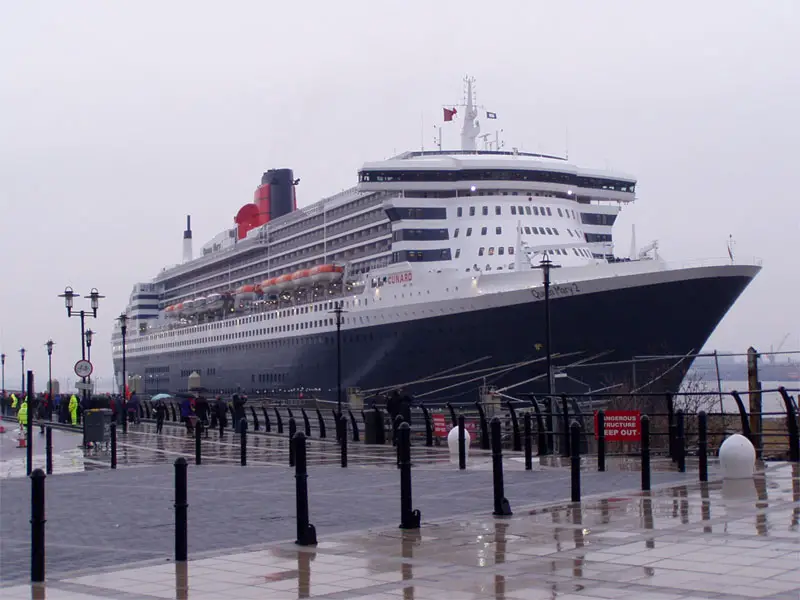
John Bradley, CC BY-SA 3.0, via Wikimedia Commons
The world's first 1 gigabyte SD card
On 27th January 2004, SanDisk released the first SD (Secure Digital) card with a capacity of 1 gigabyte.* Costing about $500, this was enough to store 300 MP3 music files, or 2,000 images taken at 1,600 x 1,200-pixel resolution, or around nine hours of MPEG4 video. SD card capacities grew exponentially this decade – doubling each year whilst declining rapidly in cost. By 2011, they were available at 128GB.
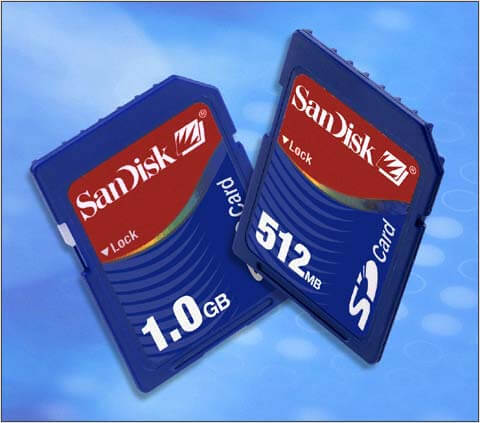
Facebook is launched
Facebook, originally known as "TheFacebook", was launched on 4th February 2004. It later became the most popular social networking site on the web – overtaking its main competitor, MySpace, in April 2008. It also became the most popular website for sharing photos, with 14 million uploaded daily. By 2010, Facebook had amassed over 350 million users, or about one-fifth of all users on the Internet, with its membership continuing to grow rapidly.
Facebook generated much controversy. It was blocked intermittently in some countries including China, Iran, Syria, and Vietnam. It was also banned at many places of work to discourage employees from wasting time using the service. Privacy also became an issue and was compromised on many occasions. During the late 2010s and early 2020s, its role in misinformation was also brought into sharp focus.
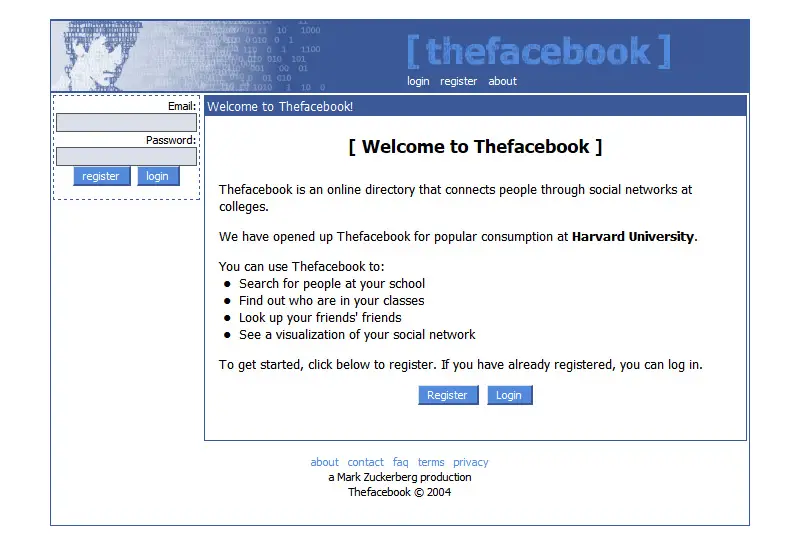
Hubble Ultra Deep Field
The Hubble Ultra Deep Field (HUDF), released to the public on 9th March 2004, was an image taken by the Hubble Space Telescope. With an exposure time of a million seconds, it was the deepest image of the universe ever taken by humans, looking back more than 13 billion years to just a few hundred million years after the Big Bang.
The HUDF image was taken in a section of sky with a low density of bright stars in the near-field, allowing much better viewing of dimmer, more distant objects. This revealed an estimated 10,000 galaxies. Located southwest of Orion in the southern hemisphere constellation Fornax, it covered 11.0 square arcminutes – just one-tenth the diameter of the full moon as viewed from Earth, or smaller than a 1 mm by 1 mm square of paper held 1 metre away, and equal to roughly one 13-millionth the total area of the sky.
Click to enlarge
Train bombings in Madrid kill nearly 200 people
The 2004 Madrid train bombings were a series of coordinated bombings against the Cercanías (commuter train) system of Madrid, on the morning of 11th March 2004 (three days before Spain's general elections), killing 191 and wounding over 1,800. The official investigation by the Spanish Judiciary determined that the attacks were directed by a Muslim al-Qaeda-inspired terrorist cell, though no direct al-Qaeda participation (only "inspiration") was established. Nationwide demonstrations and protests followed the attacks. Some analysts claimed that the Aznar administration lost the elections as a result of the handling and representation of the terrorist attacks, rather than the bombings per se.

Flowers and messages left at the site of the 2004 Madrid train bombings. Credit: Jordiferrer (CC BY-SA 3.0)
The discovery of Sedna is announced
On 15th March 2004, the scientific community was abuzz with excitement as researchers announced the groundbreaking discovery of Sedna, a celestial body located in the far reaches of the Solar System. This enigmatic object, beyond even Pluto, offered a tantalising glimpse into the vast and little-studied region known as the Oort Cloud.
Sedna's characteristics set it apart from other known bodies; its elongated, 11,400-year orbit suggested that it might have originated from an extremely distant region of space, giving clues to the early formation and evolution of the Solar System.
With a diameter of around 1,000 km, it became the largest solar body to be found in over 70 years. Astronomers calculated that its perihelion (closest approach to the Sun) would occur in 2076.
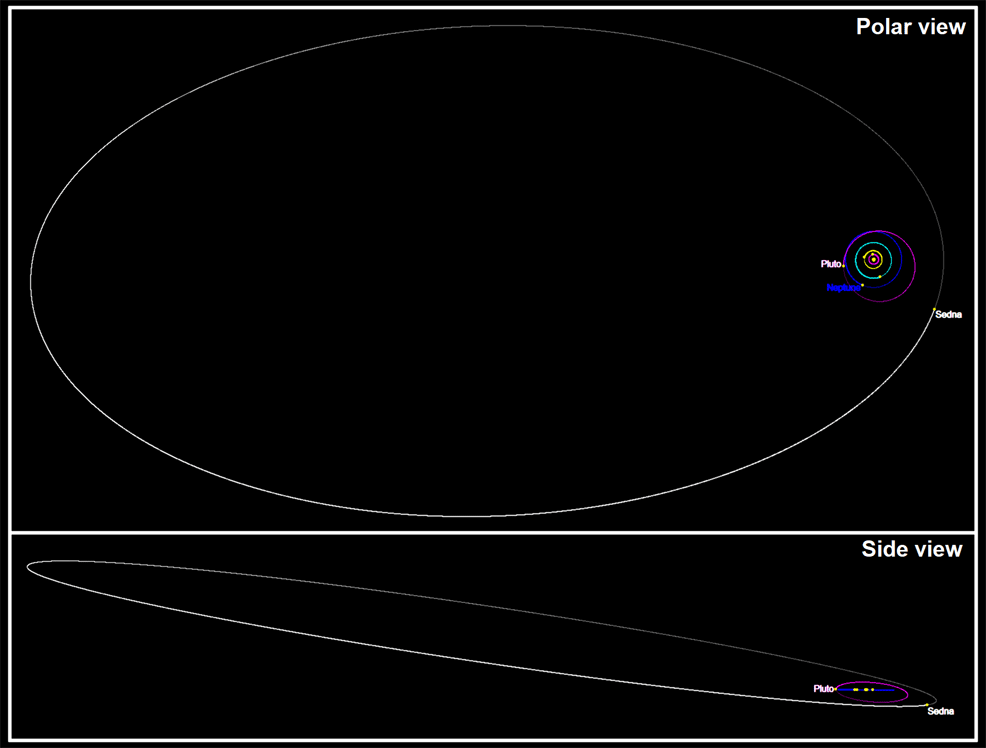
Tomruen, CC BY-SA 4.0, via Wikimedia Commons
The first recorded hurricane in the South Atlantic
An extremely rare cyclone, named Catarina, formed off the coast of Brazil on 24th March 2004 and began to move toward the coast. Despite being a relatively low-level category one hurricane, the people in this region had never experienced such a storm in all of recorded history.
Upon making landfall, Catarina damaged or destroyed over 40,000 homes and dealt huge damage to the rice and banana crops in the area. Three people were confirmed dead. The overall damage amounted to $350 million.
Scientists debated over the cause of such a rare formation, many attributing it to climate change. Although the hurricane was never officially declared a result of global warming, the consensus stated that it was the product of highly unusual warm currents in the South Atlantic – an ominous sign.
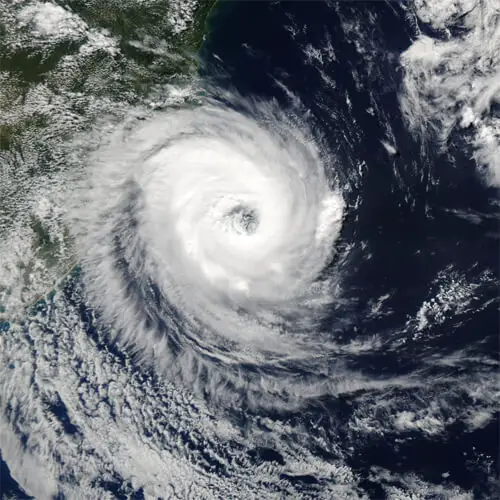
Expansion of NATO
On 29th March 2004, NATO underwent its largest single expansion since the organisation's foundation in 1949. Seven Eastern European and Baltic countries formally became members, marking a significant shift in the European security landscape. These countries were Bulgaria, Estonia, Latvia, Lithuania, Romania, Slovakia, and Slovenia.
Most had been part of the Eastern Bloc or the Soviet Union during the Cold War. Slovenia, the exception, was formerly a part of Yugoslavia, which was not a member of the Warsaw Pact (the Eastern Bloc's military alliance) but was communist-led and not aligned with NATO during the Cold War.
The accession of these seven countries symbolised the post-Cold War realignment of European nations toward Western institutions. This enlargement emphasised their commitments to shared democratic values, the rule of law, and collective defence mechanisms. While celebrated by many, the expansion was viewed with suspicion by Russia, intensifying concerns about NATO's eastward movement. This event played a vital role in shaping the geopolitical dynamics of Europe in the 21st century.

NATO members who joined between 1949–2003 (blue) and new members joining on 29th March 2004 (red).
Enlargement of the EU
Barely a month after the NATO expansion in March 2004, the EU followed suit, marking another monumental step in the integration of Eastern and Central European states into Western institutions. On 1st May, ten nations – Cyprus, the Czech Republic, Estonia, Hungary, Latvia, Lithuania, Malta, Poland, Slovakia, and Slovenia – were inducted into the EU. This was the single biggest enlargement in the EU's history.
As with the NATO expansion, most of these nations had formerly been under Soviet influence or part of the Eastern Bloc. Their accession into another major Western organisation highlighted the extensive economic, political, and social reforms they had undertaken.
However, while signifying a reunification of Europe after the Cold War divisions, new challenges also presented themselves, such as addressing economic disparities and navigating cultural differences. Nonetheless, the 2004 enlargements of both the EU and NATO marked major milestones for the continent.
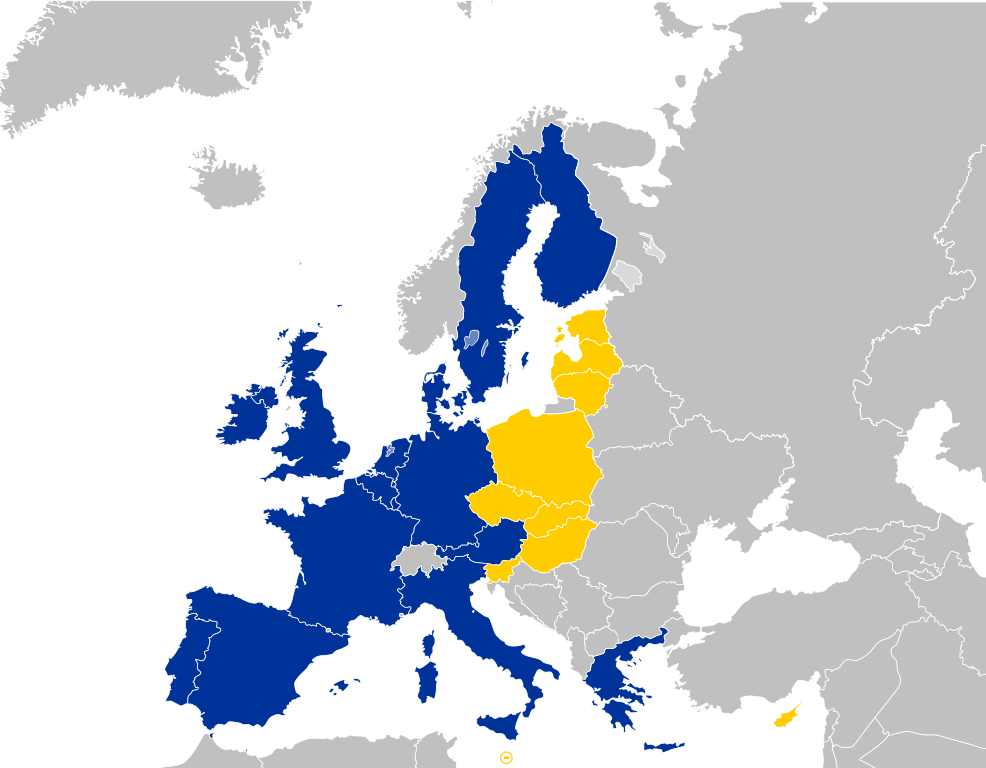
EU members in 2004 (blue). New EU members admitted in 2004 (blue). Credit: Júlio Reis. Derivative work: Kolja21, CC BY-SA 2.5, via Wikimedia Commons
Massachusetts legalises same-sex marriage
In the United States, the movement for LGBT rights achieved a landmark victory on 17th May 2004, when Massachusetts became the first state to legally recognise same-sex marriage.
The Massachusetts Supreme Judicial Court had ruled in favour of this right in November 2003, and the decision came into effect in May 2004, paving the way for thousands of same-sex couples to marry. This groundbreaking move set a precedent and intensified the debate over such rights across the nation.
Slightly over a decade later, on 26th June 2015, the U.S. Supreme Court ruled in the case of Obergefell v. Hodges, effectively legalising same-sex marriage nationwide, affirming the right of all couples, regardless of gender, to marry.

The first privately-funded human spaceflight
Flight 15P of SpaceShipOne became the first privately-funded human spaceflight and took place on 21st June 2004. This was the fourth powered test flight of the Tier One program, the previous three having reached much lower altitudes. The flight carried only its pilot, Mike Melvill, to an altitude of 100.1 km (62.2 mi). Melvill thus became the first non-governmental astronaut.
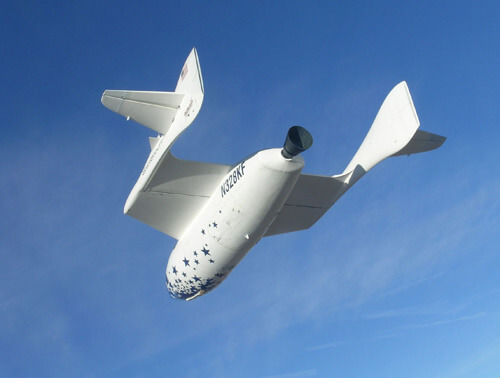
Credit: Rokits XPrize gallery (CC BY-SA 1.0)
The U.S. transfers sovereignty to the Iraqi Interim Government
28th June 2004 marked a significant step towards restoring autonomy to Iraq after the 2003 invasion, as the United States officially transferred sovereignty to an interim Iraqi government. This move symbolised the end of U.S. administrative control that began after the ousting of Saddam Hussein.
The handover, which took place two days ahead of the initially planned 30th June date, was executed in a low-key ceremony in Baghdad. Paul Bremer, the U.S. administrator in charge of Iraq, presented legal documents to the chief justice of the interim government, symbolically sealing the transfer of authority.
While this event marked a formal end to the occupation, it did not signify the end of the U.S. military presence in the nation. Thousands of American troops remained stationed in Iraq, playing a supportive role to help maintain security and train Iraqi forces. The establishment of the interim government was a precursor to democratic elections held the following year.
Challenges remained, despite this transition. The country continued to grapple with sectarian violence, insurgency, and the rebuilding of its infrastructure and institutions for many years to come. This transfer of sovereignty was just one phase in the long and complex process of Iraq's post-war reconstruction and path towards self-determination.
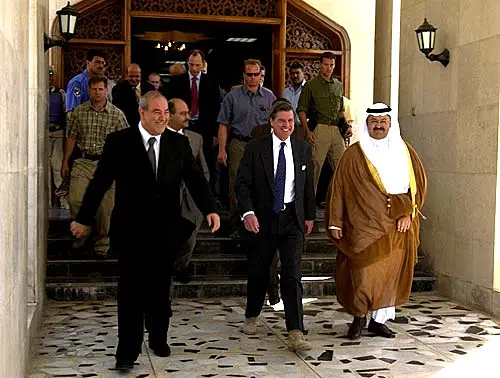
Iraqi Prime Minister Ayad Allawi (left), Ambassador Paul Bremer, and President Sheikh Ghazi Ajil al-Yawar,
28th June 2004, in Baghdad, Iraq. U.S. Air Force photo by Staff Sgt. Ashley Brokop.
Athens hosts the Olympic Games
This was the first time since 1896 that the Olympics were held in Greece. The event took place from 13th–29th August 2004. The United States won the most medals with 101, while Greece came in 15th with a total of 16. Despite the success of the event, its high cost (€10 billion, or about $13.8 billion) contributed to the nation's economic crisis later in the decade.
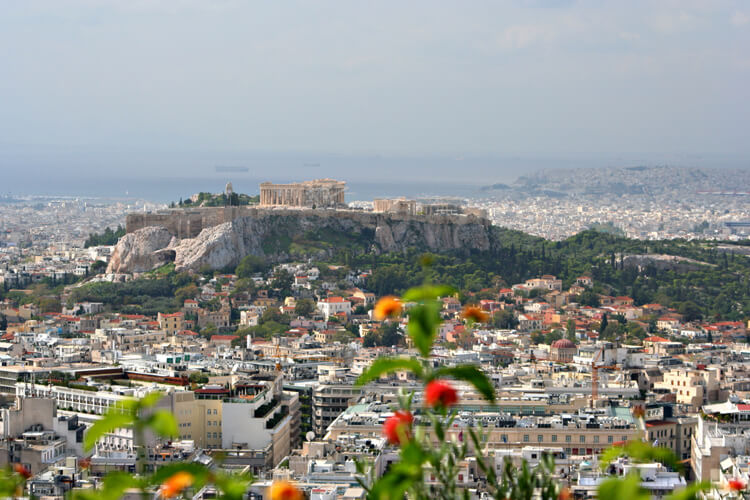
© Georgios
Alexandris | Dreamstime.com
Beslan school siege
The Beslan school siege was a major terrorist attack that took place from 1st–3rd September 2004, when armed Chechen rebels took over 1,100 people – including 777 children – hostage at School No. 1 in Beslan, North Ossetia (an autonomous republic in the North Caucasus region of Russia).
The militants were a group of 32 members of Riyad-us Saliheen, a small "martyr" force of suicide attackers. They demanded Russian withdrawal from and recognition of the independence of the neighbouring Chechnya region, as well as the release of Chechen separatists and their supporters imprisoned by the Russian government. The attackers mined the gym and the rest of the building with improvised explosive devices (IEDs), surrounding it with tripwires, and in some cases wore explosive belts on themselves.
As the crisis unfolded over three days, Russian security forces made the controversial decision to storm the building. Unlike the 2002 Moscow theatre siege where security forces used a narcotic gas leading to multiple civilian casualties, no such gas was used at Beslan. However, explosions initiated by militants, followed by a chaotic gunfight, resulted in over 330 deaths, including 186 children, making it the deadliest school shooting in history.
By the end of the crisis, all but one of the attackers were killed. The lone survivor, Nur-Pashi Kulayev, was captured, tried, and subsequently sentenced to life in prison for his role in the siege.
In the wake of the Beslan tragedy, the government began to toughen laws on terrorism and expand the powers of law-enforcement agencies. In addition, President Putin signed a law that replaced the direct election of the heads of the federal subjects of Russia with a new system, in which they are proposed by the president of Russia and then approved or disapproved by the elected legislative bodies of the federal subjects.
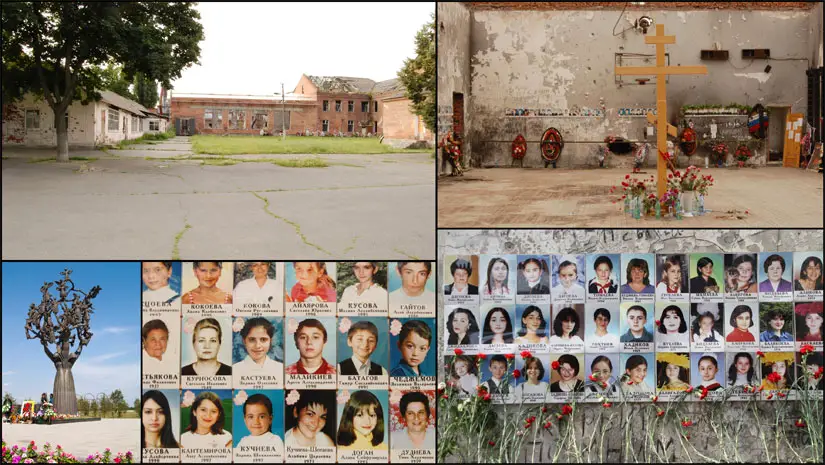
Credits: Beslan_foto_pogibshih.jpg: LeonBeslan_zdanie_shkoly_1.JPG: LeonKrest_v_zale_shkoly_Beslana.JPG: LeonBeslan-monument-tree_of_grief_2.jpg: Evstafiev derivative work: Thaifighter911, CC BY-SA 3.0, via Wikimedia Commons
Graphene is isolated
Graphene is one of the crystalline forms of carbon alongside diamond, graphite, carbon nanotubes and fullerenes. In this material, the carbon atoms are arranged in a regular hexagonal pattern. Graphene can be described as a one-atom thick layer of the layered mineral graphite. High-quality graphene is extremely strong (up to 300 times stronger than steel), light, nearly transparent and conducts electricity better than copper. Its interaction with other materials, as well as photons, and its inherently two-dimensional nature, produce unique properties.
At the time of its isolation on 22nd October 2004, researchers studying carbon nanotubes were already well familiar with the composition, structure and properties of graphene, which had been theorised decades earlier. A combination of familiarity, extraordinary properties and surprising ease of isolation enabled an explosion in graphene research. Andre Geim and Konstantin Novoselov, at the University of Manchester, won the Nobel Prize in Physics in 2010 "for ground-breaking experiments regarding the two-dimensional material graphene".
By 2013, over 7,000 patents had been issued for graphene worldwide. In this same year, the European Union announced a €1 billion euro ($1.37 billion) project involving researchers from 200 research institutes, intended to accelerate the knowledge of its properties and production techniques.*
Often described as the "wonder material of the 21st Century" – as plastics were to the 20th – revolutionary applications would emerge in later decades including the development of lightweight, ultra-thin, flexible and more durable display screens; the replacement of silicon allowing Moore's Law to continue; highly efficient solar cells; cheaper and faster methods of desalinating water; and various new medical, chemical and industrial processes.

Graphene, discovered on 22nd October 2004. Credit: AlexanderAlUS (CC BY-SA 3.0)
George W. Bush is re-elected
The US presidential election of 2004 was the United States' 55th quadrennial presidential election. It was held on Tuesday 2nd November 2004. Republican Party candidate and incumbent President George W. Bush defeated Democratic Party candidate John Kerry, the then-junior U.S. Senator from Massachusetts. Foreign policy was the dominant theme throughout the election campaign, particularly Bush's conduct of the War on Terrorism and the 2003 invasion of Iraq.
As in the 2000 presidential election, voting controversies and concerns of irregularities emerged during and after the vote. The winner was not determined until the following day, when Kerry decided not to dispute Bush's win in the state of Ohio. The state held enough electoral votes to determine the winner of the presidency. Both Kerry and Democratic National Committee Chairman Howard Dean have stated their opinion that voting in Ohio did not proceed fairly and that, had it done so, the Democratic ticket might have won that state and therefore the election. However, there was far less controversy about this election than in 2000.
Only three states changed allegiance. New Mexico and Iowa voted Democratic in 2000, but voted Republican in 2004. New Hampshire voted Republican in 2000 but voted Democratic in 2004. In the Electoral College, Bush received 286 votes, and Kerry 251.
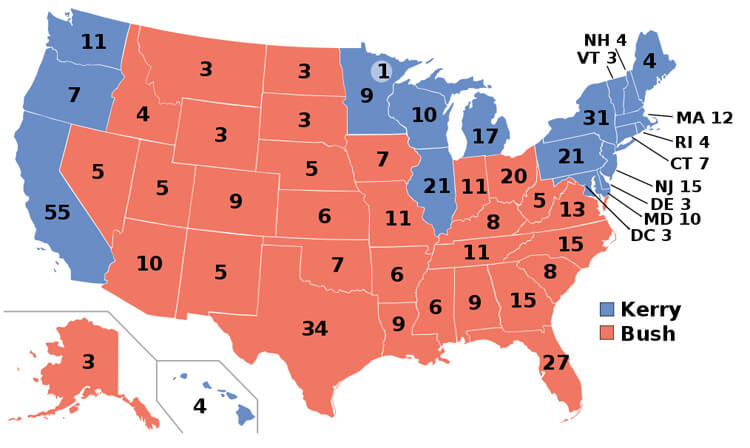
The Po'ouli goes extinct
On 26th November 2004, the final captive Po'ouli (pronounced poh-oh-U-lee), a rare Hawaiian bird, died in its cage. This marked the sad end of its lineage, rendering the species extinct. Native to the island of Maui, Hawaii, the Po'ouli was a victim of habitat loss and introduced predators. Its extinction served as a stark reminder of the vulnerabilities faced by many species in rapidly changing environments.

Indian Ocean earthquake leaves 230,000 dead
The 2004 Indian Ocean earthquake was an undersea megathrust earthquake occurring on 26th December 2004, with an epicentre off the west coast of Sumatra, Indonesia.
Caused by subduction, it triggered a series of devastating tsunamis along coasts bordering the Indian Ocean, inundating towns and cities with waves up to 30 metre (100 feet) high. Nearly 230,000 people in 14 countries were killed and over 1.7 million displaced. It was among the deadliest natural disasters in recorded history. Indonesia, Sri Lanka, India and Thailand were the hardest hit.
With a magnitude of 9.3, it was the second largest earthquake ever recorded on a seismograph. The earthquake had the longest duration of faulting ever observed, between 8.3 and 10 minutes. It caused the entire planet to vibrate as much as 25 mm (1 in) and triggered other earthquakes as far away as Alaska.
The plight of the many affected people and countries prompted a widespread humanitarian response. In all, the worldwide community donated more than $7 billion (2004 U.S. dollars) in aid.
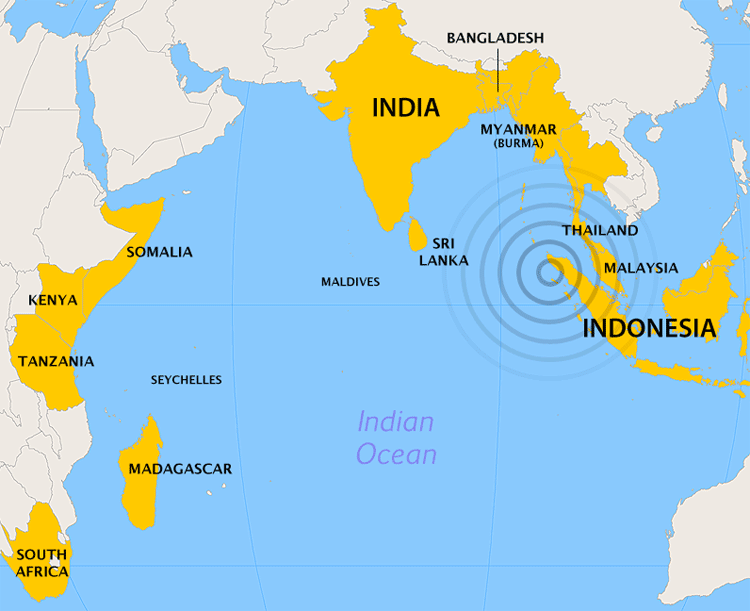
Credit: Cantus (CC BY-SA 3.0)
Asia gets a new tallest building
Measuring 509m (1,671 ft) to the tip of its spire, Taipei 101 overtook the Petronas Towers to become the tallest building in the world. It was the first skyscraper to break the half-kilometre mark. The tower was completed and opened to the public on 31st December 2004.

© Michael
Chien | Dreamstime.com
« 2003 |
⇡ Back to top ⇡ |
2005 » |
If you enjoy our content, please consider sharing it:
References
1 SanDisk 1GB SD Card Ships, DP Review:
http://www.dpreview.com/news/2004/1/29/sandisk1gbsdcard
Accessed 3rd November 2013.
2 Graphene and Human Brain Project win largest research award in history, Future Timeline Blog:
https://www.futuretimeline.net/blog/2013/01/28.htm
Accessed 3rd November 2013.
![[+]](https://www.futuretimeline.net/images/buttons/expand-symbol.gif)








